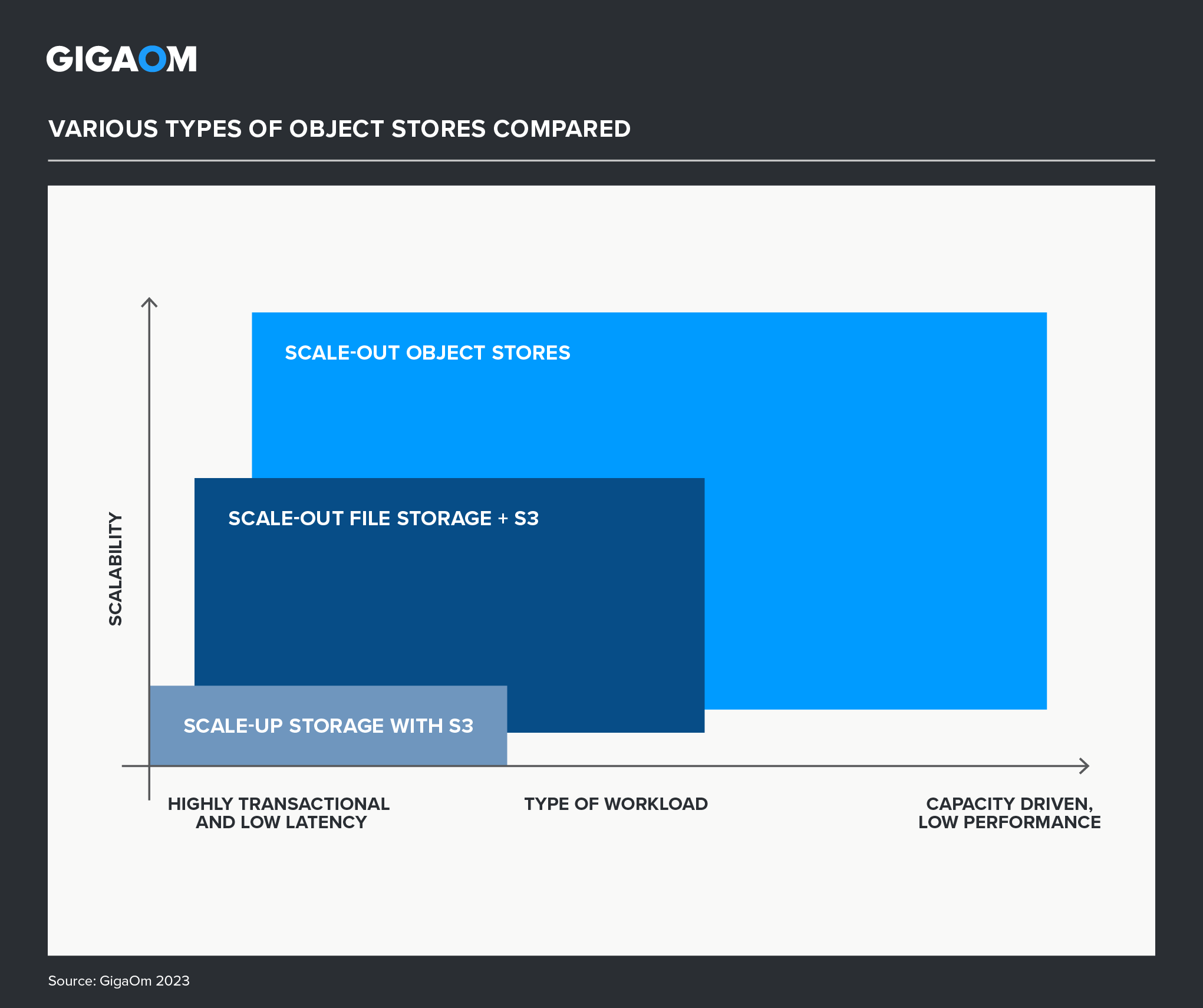Table of Contents
- Summary
- Object Storage Primer
- Report Methodology
- Decision Criteria Analysis
- Evaluation Metrics
- Key Criteria: Impact Analysis
- Analysts’ Take
- Methodology
- About GigaOm
- Copyright
1. Summary
Object storage is more popular than ever before, and just about every IT organization is adopting it in one way or another. It’s common in the public cloud, especially with large organizations, and hybrid infrastructures and large on-premises installations are using it as well.
A growing number of applications need to store data safely and access it from anywhere, from multiple applications and devices concurrently, while next-generation microservices-based applications often use object storage as their primary data repository. Moreover, high-performance computing (HPC) applications—like big data analytics and artificial intelligence and machine learning (AI/ML)—are also big consumers of object storage, and the new flash media types introduced in high-performance object storage systems strengthen the case for object storage generalization among high-performance, high-value workloads. This means that the key characteristics of enterprise object stores have changed, with much more attention paid to performance, ease of deployment, security, federation capabilities, and multitenancy than in the past. In addition, edge use cases are becoming more prevalent, and tiny object storage installations at the edge—serving small Kubernetes clusters and internet of things (IoT) infrastructure—are surfacing.
Most of the success of object storage comes from its use in the public cloud. Amazon Web Services (AWS) S3 is the de facto standard, and all object storage vendors adopted this interface for their solutions. Standardization and the resulting enhanced compatibility enable users to build hybrid and multicloud infrastructures more confidently and at a reasonable cost. Even better, some vendors have built solutions aimed at virtualizing access to multiple object stores on the back end for better control over data placement, governance, and cost. The S3 application programming interface (API) has now been adopted by traditional storage systems too, including primary scale-up storage systems, and products are very much differentiated in terms of scalability, performance, and features (see Figure 1).

Figure 1: Various Types of Object Stores Compared
Object storage often has a very long lifespan compared to other storage systems in the infrastructure, and the market landscape is very complex. Before deciding which solution is better, users should consider whether the object store will be relatively small and serve one or a few applications or whether it will become a fundamental infrastructure service that will store data for a large number of applications, services, and other infrastructure components. This decision will have a strong impact on both data management and the deployment model.
The GigaOm Key Criteria and Radar reports provide an overview of the object storage market, identify capabilities (table stakes, key criteria, and emerging technology) and evaluation metrics (non-functional purchase drivers) for selecting an object storage solution, and detail vendors and products that excel. These reports give prospective buyers an overview of the top vendors in this sector and help decision-makers evaluate solutions and decide where to invest.
How to Read this Report
This GigaOm report is one of a series of documents that helps IT organizations assess competing solutions in the context of well-defined features and criteria. For a fuller understanding, consider reviewing the following reports:
Key Criteria report: A detailed market sector analysis that assesses the impact that key product features and criteria have on top-line solution characteristics—such as scalability, performance, and TCO—that drive purchase decisions.
GigaOm Radar report: A forward-looking analysis that plots the relative value and progression of vendor solutions along multiple axes based on strategy and execution. The Radar report includes a breakdown of each vendor’s offering in the sector.
Solution Profile: An in-depth vendor analysis that builds on the framework developed in the Key Criteria and Radar reports to assess a company’s engagement within a technology sector. This analysis includes forward-looking guidance around both strategy and product.
